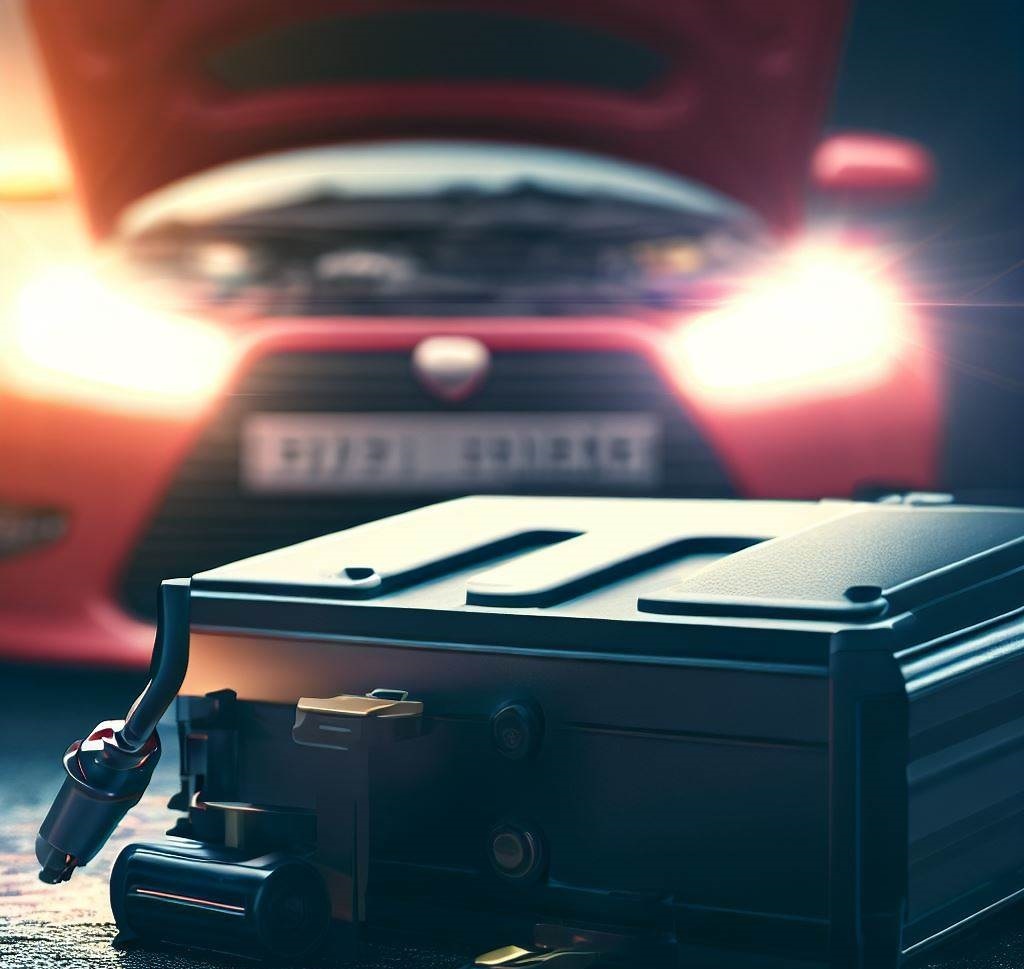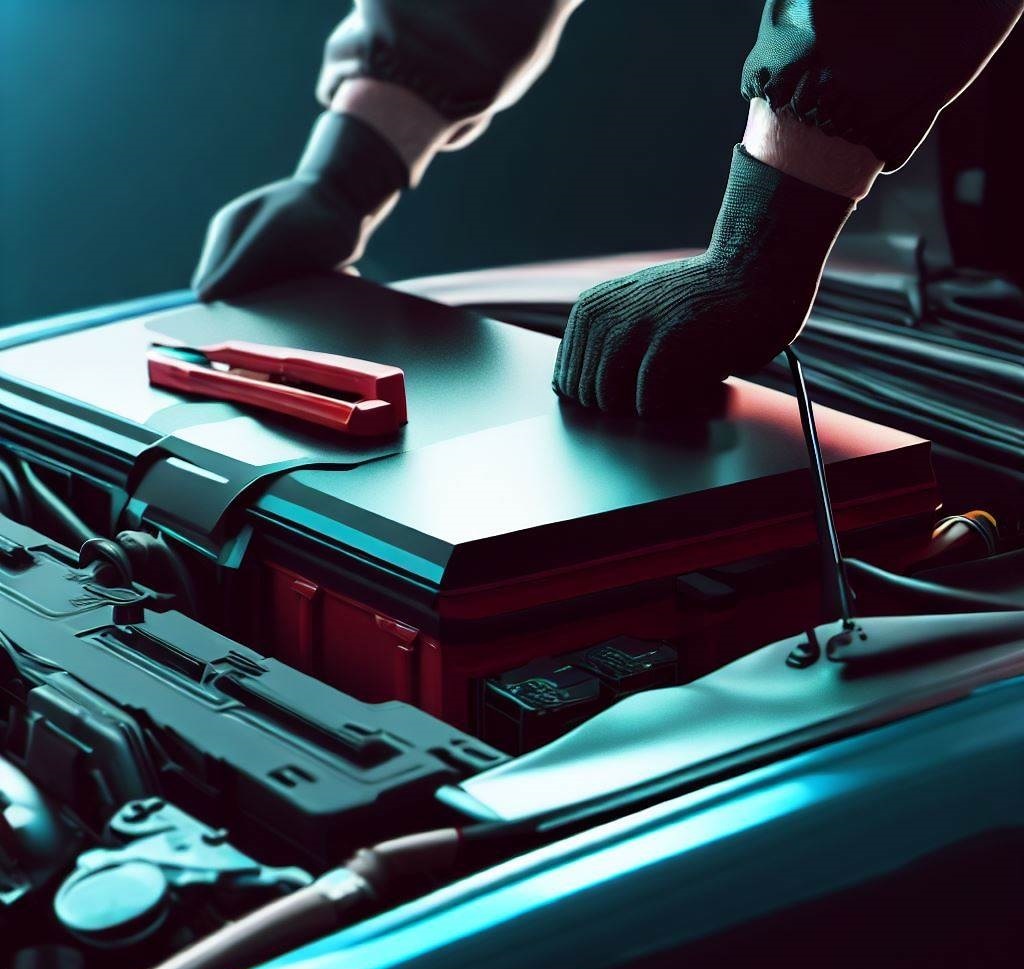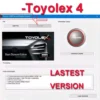No products in the cart.
When is it Time to Replace Your Car Battery? 4
One of the most crucial parts of your vehicle is the battery. Your vehicle’s engine, lights, radio, air conditioning, and other electrical systems can all be started with its help. Without a strong battery,you can become stranded on the road or have to pay for expensive repairs.
But how can you know when to replace your automobile battery? What are the telltale symptoms that your battery is deteriorating or dead? And what are some tips for selecting the best battery for your automobile to increase its lifespan?
These and other questions will be addressed in this blog post. We’ll go through some typical indicators that a car battery needs to be replaced, like a slow or nonexistent start, dim or flickering lights, corrosion, leaks, or an unpleasant odor. Additionally, we will discuss each sign’s causes, effects, and recommendations for prevention or correction. Finally,we’ll share some advice with you on how to pick the best battery for your vehicle, including how to look at the size, type, capacity, and warranty.
You will know when to change your car battery and how to do it at the conclusion of this article. Additionally, you’ll discover how to save time and money by extending the life of your batteries and eliminating needless battery replacements. Then let’s get going!

Slow or no start
One of the most obvious signs that your car battery needs to be replaced is when your car struggles to start or does not start at all. This could happen for several reasons, such as:
- Your battery is old and worn out. Car batteries typically last between three to five years, depending on the quality, usage, and maintenance. Over time, the battery loses its ability to hold a charge and deliver enough power to start the engine.
- Your battery is drained or dead. This could happen if you leave your lights, radio, or other accessories on for a long time without running the engine. It could also happen if you have a faulty alternator, starter, or wiring that prevents the battery from being recharged properly.
- Your battery terminals are loose or corroded. The terminals are the metal connectors that attach the battery cables to the battery posts. If they are loose or corroded, they can cause poor electrical contact and prevent the battery from supplying enough power to the starter.
If your vehicle won’t start or is starting slowly, you should first try to jump-start it with a portable jump starter or another car. Your battery will receive a brief surge of electricity from this, enabling you to start your car. However, you shouldn’t rely on this for long-term use because it is not a permanent fix.
Replace your automobile battery as soon as possible if jump-starting doesn’t work or if you have to do it regularly. Driving with a weak or dead battery can harm more components of your electrical system and result in future issues.
Dim or flickering lights
Another sign that your car battery needs to be replaced is when your lights become dim or flicker. This includes your headlights, taillights, interior lights, dashboard lights, and any other electrical devices in your car.
When your battery is low or failing, it cannot provide enough power to run all the electrical systems in your car at the same time. This causes the voltage to drop and the lights to dim or flicker. You may notice this more at night or when you use multiple accessories at once.
If you notice dim or flickering lights in your car, you should check your battery voltage using a multimeter. A fully charged battery should have a voltage of around 12.6 volts. If it is below 12 volts, it means your battery is weak and needs to be recharged or replaced.
You should also check your alternator output using a multimeter. The alternator is the device that recharges your battery while the engine is running. It should produce a voltage of around 14 volts when the engine is idling. If it is below 13 volts, it means your alternator is not working properly and needs to be repaired or replaced.
If your battery and alternator are both in good condition, you might have a wiring or fuse issue that results in a short circuit or parasitic drain. When two wires come into contact with one another, a spark is produced that drains power and causes a short circuit. while a device continues to operate even while the automobile is off and uses battery power, this is known as a parasitic drain. If there are any indications of corrosion or damage, you should check your wiring and fuses and replace them as necessary.

Corrosion
Corrosion is another sign that your car battery needs to be replaced. Corrosion is the white, blue, or green powdery substance that forms on the battery terminals or cables. It is caused by a chemical reaction between the battery acid and the metal. Corrosion can reduce the electrical conductivity and increase the resistance of the battery, making it harder for the battery to deliver power to the starter and other devices.
Use a wire brush and a mixture of baking soda and water to remove any corrosion you notice on your battery. This will eliminate the corrosion and neutralize the acid. To stop further corrosion, you should also rub some grease or petroleum jelly on the terminals and cables.
However, you might need to replace your battery if the corrosion is severe or keeps happening. Corrosion is a sign that your battery may be leaking gas or acid, which could harm your car and be dangerous. It may also be a sign of overcharging or overheating of your battery, which can reduce its lifespan and lead it to fail early.
Leaks
Leaks are another sign that your car battery needs to be replaced. Leaks can occur when the battery case cracks or breaks due to physical damage, extreme temperatures, or overcharging. Leaks can also occur when the battery vents release excess gas or acid due to internal pressure or chemical reactions.
Leaks can cause several problems for your car and your health. For example:
- Leaks can cause corrosion on the battery terminals, cables, and surrounding parts, affecting the electrical performance and safety of your car.
- Leaks can cause acid burns on your skin, eyes, or clothes, which can be painful and dangerous.
- Leaks can cause toxic fumes to escape from the battery, which can be harmful to breathe and cause nausea, headaches, or respiratory problems.
If you notice any leaks from your battery, you should replace it immediately. You should also wear gloves and goggles when handling a leaking battery and dispose of it properly at a recycling center or an auto parts store. Do not throw away a leaking battery in the trash or pour the acid down the drain, as this can harm the environment and violate local regulations.
Bad smell
A bad smell is another sign that your car battery needs to be replaced. A bad smell can come from the battery itself or from the engine compartment where the battery is located. It can indicate that your battery is leaking, overheating, or overcharging.
A bad smell from your battery can have different characteristics depending on the cause. For example:
- A rotten egg smell can indicate that your battery is emitting hydrogen sulfide gas, which is a byproduct of sulfuric acid reacting with lead plates inside the battery. This can happen when your battery is overcharged or damaged.
- A burning smell can indicate that your battery is overheating or short-circuiting, which can cause sparks or flames to ignite nearby materials. This can happen when your battery is old, worn out, or poorly maintained.
- A sweet smell can indicate that your battery is leaking electrolyte fluid, which is a mixture of water and sulfuric acid. This can happen when your battery case cracks or breaks due to physical damage or extreme temperatures.
If you smell anything unusual from your battery or engine compartment, you should turn off your car and inspect your battery for any signs of leaks, corrosion, or damage. You should also check your alternator output and wiring for any faults that could cause your battery to overcharge or overheat.If you find any problems with your battery or electrical system, you should replace or repair them as soon as possible.
How to choose the right battery for your car
Now that you know some of the signs that indicate your car battery needs to be replaced, you may wonder how to choose the right battery for your car. There are many types and brands of batteries available in the market, but not all of them are suitable for your car.
To choose the right battery for your car, you should consider the following factors:
- Size: The size of the battery refers to its physical dimensions and shape. It should fit snugly in the designated space in your engine compartment without touching any other parts. You can find out the correct size for your car by checking your owner’s manual,looking at the label on your old battery, or using an online fitment guide.
- Type: The type of the battery refers to its chemistry and design. There are different types of batteries for different purposes and climates. Some of the most common types are:
- Lead-acid: This is the traditional type of car battery that uses lead plates and sulfuric acid as electrodes and electrolyte. It is cheap, reliable, and easy to maintain. However, it is heavy, prone to corrosion and sulfation, and has a limited lifespan.
- Absorbed glass mat (AGM): This is a type of lead acid battery that uses glass fibers as separators between the plates and absorbs the electrolyte in them. It is more durable,resistant to vibration and leakage, and has a longer lifespan than a regular lead-acid battery. However, it is more expensive, sensitive to overcharging, and requires a special charger.
- Lithium-ion (Li-ion): This is a type of battery that uses lithium and other metals as electrodes and a liquid or gel as electrolyte. It is lighter, more efficient, and has a longer lifespan than a lead-acid battery. However, it is more expensive, sensitive to temperature and overcharging, and requires a special car battery charger.
- Enhanced flooded battery (EFB): This is a type of lead-acid battery that uses carbon additives in the plates and separators to improve the performance and durability. It is similar to an AGM battery but cheaper and less maintenance-free. It is suitable for cars with start-stop systems that require frequent restarts.
- Gel: This is a type of lead-acid battery that uses a gel-like electrolyte instead of a liquid. It is more resistant to leakage, vibration, and extreme temperatures than a regular lead-acid battery. However, it is more expensive, less powerful, and requires a special charger.
- Capacity: The capacity of the battery refers to the amount of electrical charge it can store and deliver. It is measured in ampere-hours (Ah) or cold cranking amps (CCA). Ah indicates how long the battery can run the accessories when the engine is off. CCA indicates how much power the battery can provide to start the engine in cold weather. You should choose a battery with enough capacity to meet your car’s electrical needs and climate conditions. You can find out the recommended capacity for your car by checking your owner’s manual, looking at the label on your old battery, or using an online fitment guide.
- Warranty: The warranty of the battery refers to the period of time and the conditions under which the manufacturer or seller will cover the cost of repair or replacement if the battery fails or malfunctions. You should choose a battery with a long and comprehensive warranty that covers both parts and labor. You should also check the terms and conditions of the warranty, such as the exclusions, limitations, and requirements.
How to replace your car battery
Once you have chosen the right battery for your car, you may wonder how to replace it yourself or where to get it done professionally. Replacing your car battery is not a difficult task, but it requires some basic tools and safety precautions. Here are some steps you can follow to replace your car battery yourself:
- Park your car in a safe and level place. Turn off the engine and remove the key from the ignition. Put on gloves and goggles to protect your hands and eyes from acid or sparks.
- Open the hood and locate the battery. Disconnect the negative cable first by loosening the clamp with a wrench or pliers and lifting it off the terminal. Then disconnect the positive cable in the same way. Be careful not to touch or drop any metal tools on the terminals or cables, as this can cause a short circuit or a shock.
- Remove any brackets or straps that hold the battery in place. Lift out the old battery carefully and place it on a flat surface away from any heat or flame sources. Do not tilt or shake the battery, as this can cause acid to spill out.
- Clean the battery tray, terminals, and cables with a wire brush and a solution of baking soda and water. This will remove any corrosion or dirt that could affect the electrical contact or performance of your new battery.
- Place the new battery in the tray and secure it with the brackets or straps. Connect the positive cable first by placing it on the terminal and tightening the clamp with a wrench or pliers. Then connect the negative cable in the same way. Make sure both cables are firmly attached and not loose or corroded.
- Close the hood and start your engine. Check your lights, radio, air conditioning, and other electrical systems to make sure they are working properly.
If you prefer to get your car battery replaced by a professional, you can visit one of our recommended products or services:
- AutoZone: AutoZone is one of the leading retailers of automotive parts and accessories in the US. They offer free battery testing and installation at most of their locations. You can also buy your new battery online and pick it up at your nearest store or have it delivered to your home.
- RepairSmith: This is an online platform that connects you with certified mechanics who can come to your home or office and perform various car repairs and maintenance services. They offer competitive prices, transparent quotes, and convenient scheduling. You can book your car battery replacement online and get it done at your preferred time and location.
Summary
For your vehicle to operate safely and effectively, your car battery must be replaced as necessary. Some frequent indications that your automobile battery needs to be replaced include a slow or nonexistent start, dim or flickering lights, corrosion, leaks, or an unpleasant odor.
You should also choose the right battery for your car based on factors such as size, type, capacity, and warranty. You can replace your car battery yourself by following some simple steps or get it done professionally by using one of our recommended products or services.
We hope this blog post has been helpful and informative for you. If you have any questions or comments, please feel free to leave them below. We would love to hear from you and help you with your car battery needs.






common, don’t make science out of all, replace when it dies…
The writer’s ability to break down complex technical information into simple terms is truly commendable, making it accessible to readers of all levels of automotive knowledge. I particularly appreciate the inclusion of practical tips and warning signs to watch out for, which will undoubtedly save readers from unexpected breakdowns and expenses. Kudos to the author for crafting such a valuable resource that empowers car owners to take proactive steps in maintaining their vehicles and ensuring smooth journeys on the road. This article is a must-read for every car owner out there!
Can i use regular led battery in my VW caddy with start-stop system? will there be some problems?
Ich habe einen Mitsubishi Pajero Sport mit einem Batterie-Entladungsproblem. Es handelt sich um ein altes Auto aus dem Jahr 2001 mit einem 3,0 V6 Motor,und wir vermuten, dass das Steuergerät das Problem ist. Wie kann ich es überprüfen? Bitte helfen Sie mir.